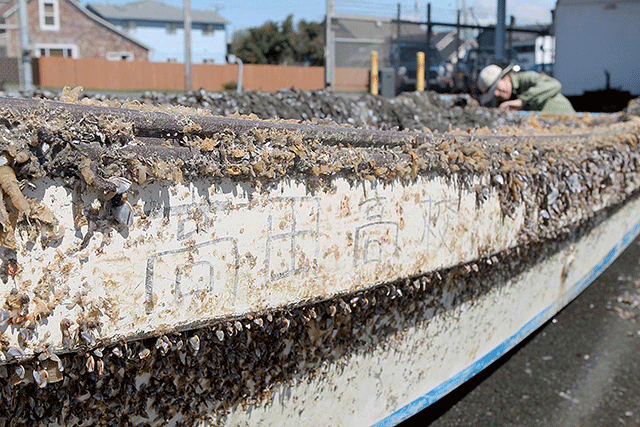
“A decade marks an important milestone after a disaster and provides a moment of attention to not only look back but also to focus on tsunami awareness and how better to protect ourselves before the next tsunami hits,” says geophysicist Lori Dengler.
Dengler is a renowned tsunami expert and professor emerita of Geology for Humboldt State University in Arcata, California. She is also a founding member of the Redwood Coast Tsunami Work Group (RCTWG). This alliance of scientists, government officials, non-governmental organizations, local native tribes, and other regional groups develops mitigation and outreach programs for coastal areas.
Active members of the RCTWG come from Del Norte, Humboldt, and Mendocino counties—all part of California’s North Coast, which is the most seismically active region of the contiguous 48 states. (See the map).
The RCTWG launched a website of testimonials, videos, and resources to remember victims and survivors of the 9.1-magnitude Japan earthquake on March 11, 2011, that triggered a tsunami killing more than 18,000 people and left hundreds of thousands homeless.
That disaster has informed the understanding of tsunami hazards and, as a result, the RCTWG has since:
— Worked with the California Geological Survey to update tsunami hazard maps for the North Coast
— Emphasized the long duration of a tsunami event, reminding people to never return to coastal areas before officials declare it safe to do so.
— Emphasized drills: survivors in Japan had practiced getting to high ground; Crescent City evacuation drills in 2010 made for a smooth process during the real tsunami of 2011.
A unique aspect of RCTWG is its locally based roots and scope. From collecting the oral history of Northern California Native tribes to working with geologists to uncover evidence of past earthquakes and tsunamis, the RCTWG weaves together science and storytelling to engage decision makers and the public in preparedness.
One of those stories being highlighted by the RCTWG is about a small boat called Kamome, which was swept into the ocean along with five million tons of debris during the 2011 Japan tsunami. The boat belonged to a high school and was swept into the ocean by the tsunami. It washed ashore two years later in Crescent City in Northern California.
Kamome’s journey here, the effort by high school students in Crescent City to return the boat to Rikuzentakata, and the ensuing connection between both cities is captured in The Extraordinary Voyage of Kamome—A Tsunami Boat Comes Home a bilingual children’s book by Dengler and Amya Miller, the former Special Assistant to the Mayor of Rikuzentakata, Japan. Since its publication it has been translated into six languages, and has become the focus on a K-12 curriculum. The Kamome story will be featured by NBC Sports in the 2021 Olympic Games.
TOP EARTHQUAKE AND TSUNAMI PREPAREDNESS TIPS
—Know your zone! Use tsunami maps to plan the best evacuation route from your home, workplace or where you play.
—Keep a “grab and go” kit by the door with essential medications, water and emergency information..
—Create emergency plans and discuss with family, coworkers and neighbors.
—Time is of the essence! The largest tsunami will come from an earthquake you will feel. The shaking is your warning. Evacuate as soon as you can safely move.